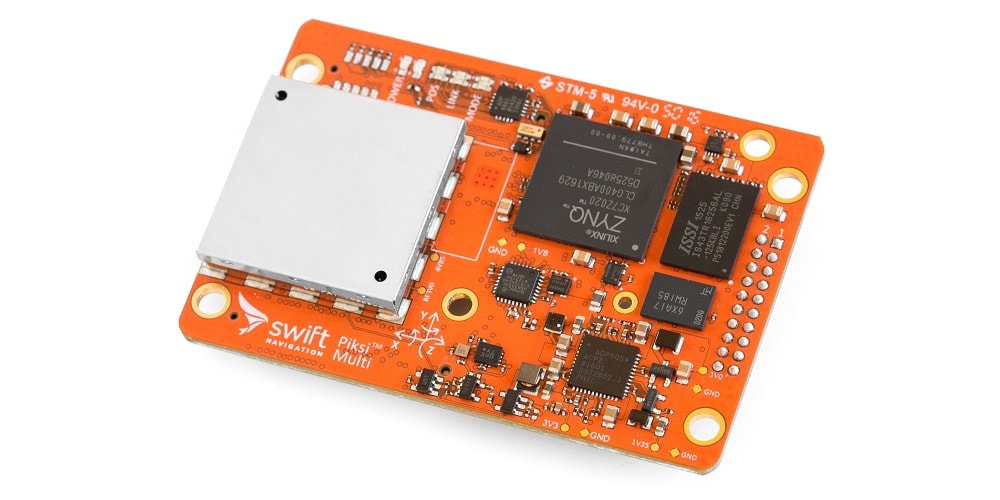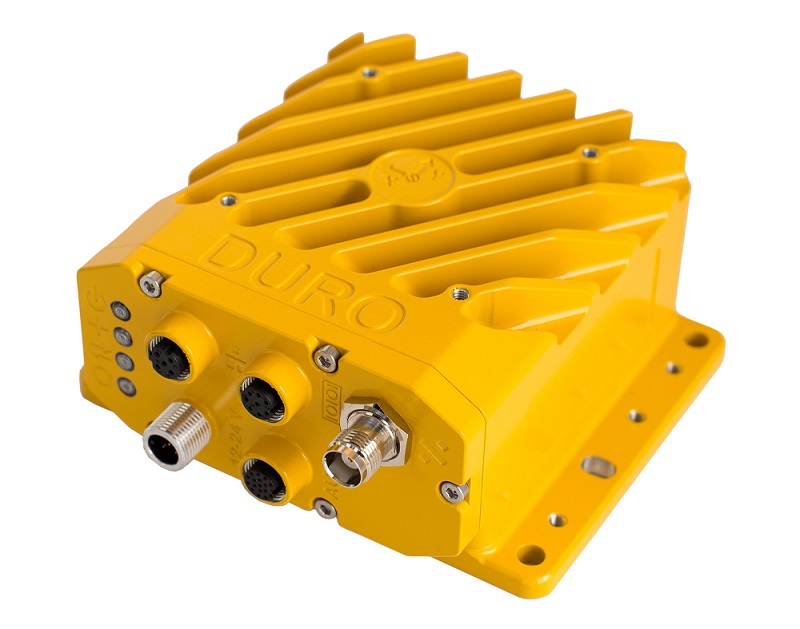Swift Navigation is a San Francisco-based tech firm building centimeter-accurate GPS technology to enable a future of autonomous vehicles to navigate and understand the world. Swift delivers Real Time Kinematics (RTK) GPS that is 100 times more accurate than traditional GPS found in a typical cell phone. Below is our interview with Diana Schlosser, VP Marketing of Swift Navigation:

Q: Diana, you’ve recently announced $34 Million in Series B funding round; could you tell us something more?
A: Yes, Swift recently announced a $34 million round led by New Enterprise Associates (NEA), with participation from Eclipse and First Round Capital. To date, we have raised a total of $47.6 million in funding. We are encouraged by the tremendous market opportunity for precision navigation that is required by autonomous vehicles. Swift is really grateful to have investors who share our vision and whose support validates our efforts in tackling hard problems in the changing landscape of GPS. We plan to use the funds to take customer deployments to scale and to continue aggressive hiring, particularly in engineering roles. We also look forward to introducing additional next-generation products later this year.
Q: What is the story behind Swift Navigation, how did you start?
A: Our founders got their start developing airborne wind turbines—large rigid-wing kites that generate electricity from strong, consistent high-altitude winds and then send the electricity down a tether attached to the kites. To guide these airborne turbines, they needed a highly accurate GPS system. When nothing on the market met their performance and cost requirements, they developed new centimeter-accurate Global Navigation Satellite Solutions (GNSS) technology, and Swift Navigation took off.
The GPS industry has actually been around for over 3 decades, however most solutions are not accurate enough for demanding applications like self-driving cars. The 10-foot-accurate GPS in your cell phone is just fine for personal navigation. It will allow you to find your destination. But it is not nearly precise enough for autonomous vehicles to navigate safely.
 Recommended: Upstream Security Shifts The Security Of Connected & Autonomous Cars To The Cloud
Recommended: Upstream Security Shifts The Security Of Connected & Autonomous Cars To The Cloud
Q: What is Piksi® Multi, how does it work?
A: Swift Navigation has several products. Our flagship product is Piksi® Multi – a centimeter-accurate, multi-band GNSS receiver.
Piksi® Multi GNSS Receiver
Just to clarify, “GPS” refers to the global satellite navigation system built by the United States and Piksi Multi does communicate with the GPS satellites on both the L1 and L2 bands (that’s why it is called “multi-band”). Multi-band systems get into high-precision mode much faster than single band systems: seconds instead of minutes. This is important for critical applications such as self-driving cars that must get a fix immediately to navigate. Having access to multiple frequency bands gives an autonomous system much greater accuracy and reliability.
However, Piksi Multi is also hardware ready for the other satellite constellations from Russia (GLONASS), China (BeiDou) and Europe (Galileo). Similar to how one receives software updates on a typical cell phone, customers using Piksi Multi will receive frequent software updates (all free of charge) as these additional satellite constellations come on board, without having to swap out any hardware. “GNSS” is a term that refers to all of the satellite constellations. In a GPS-only system, the typical number of satellites received is fewer than 10. With Piksi Multi, one can receive data from dozens. More satellites means better reliability and a more available navigation solution.
Being a small receiver, Piksi Multi can be embedded in autonomous vehicles, drones, robots and other applications.
Swift’s other product is Duro™ – a Piksi Multi GNSS receiver housed inside a rugged cast aluminum enclosure.
Duro™ – A ruggedized version of Piksi Multi
Built to be tough, Duro is IP67-rated, meaning that it can be used in outdoor environments, such as on top of an autonomous tractor, robot, self-driving car or attached to a structure or tower. Duro can be submerged in a meter of water, withstand very high and low temperatures, vibration, dust, moisture and other elements common to long-term outdoor deployments. This product does not need to be embedded inside an autonomous vehicle, but can just be mounted on top of it.
 Recommended: Asset Management Platform AlgoMe Seamlessly Matches Professionals With Job Opportunities
Recommended: Asset Management Platform AlgoMe Seamlessly Matches Professionals With Job Opportunities
Q: Why is now the time for a technology solution like Swift Navigation?
A: Every car manufacturer in the world is hard at work adding autonomous functionality to its fleet. The same goes with precision agriculture equipment manufacturers and robotic system manufacturers – they want to achieve higher levels of autonomy. But to get to true autonomy, we need to solve two hard problems. Namely, cost and precision.
Swift differs from competitive offerings in several important ways:
1. Cost. Most high-accuracy GNSS receivers are priced at $7,000 to $10,000 a unit. Comparatively, Piksi Multi is priced at $595 a unit (and less expensive in bulk orders). For autonomous vehicles to become mainstream, the cost cannot be in the $10,000 range, but needs to be at a price point that can be built into a fleet of self-driving cars. We already have achieved a 10x cost reduction versus our competitors and are working hard to continue to bring costs down.
2. Precision (centimeter-level accuracy). Most GPS is accurate to about 3 meters or 10 feet. Piksi Multi is accurate to 2 centimeters. This is important as most driving lanes are 12 feet wide and most cars are 6 feet wide. Accuracy of 10 feet simply is not good enough to avoid collisions or for vehicles to know precisely where they are on Earth. Piksi Multi uses RTK GNSS, which allows for much greater accuracy. So our brand is gaining traction as a low cost, yet highly-precise navigation solution.
Q: What are your plans for the future?
A: At Swift, our North Star mission is to enable autonomous vehicles to safely navigate.
The autonomous industry is largely consolidating around the concept of working with a suite of 5 sensors in a vehicle, consisting of GNSS, but also inertial sensors, cameras, LiDAR and Radar. All sensors can fail in certain conditions, such as when there is a lack of lane markings, inclement weather like snow covering a road or a lack of features such as in a desert environment.
Only GNSS knows its precise location on Earth at all times, unlike the other sensors. So GNSS is a critical sensor in the automotive sensor suite. Our team of engineers is focused on helping self-driving cars reach new levels of autonomy where eventually, the car will be fully automated and other than setting the destination and starting the system, no human intervention is required.
Q: How many customers do you have?
A: Swift has over 2,000 customers all over the world. We work with car companies building self-driving cars, but also have many customers in other verticals, such as precision agriculture, unmanned aerial vehicles (UAVs), robotics, space, maritime, transportation/logistics and outdoor industrial applications. Swift has an online store at our website and Piksi Multi retails for $595. Consumers and businesses alike can purchase from our store.
Activate Social Media:


